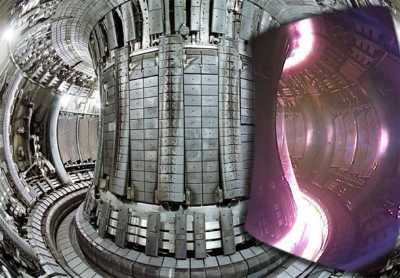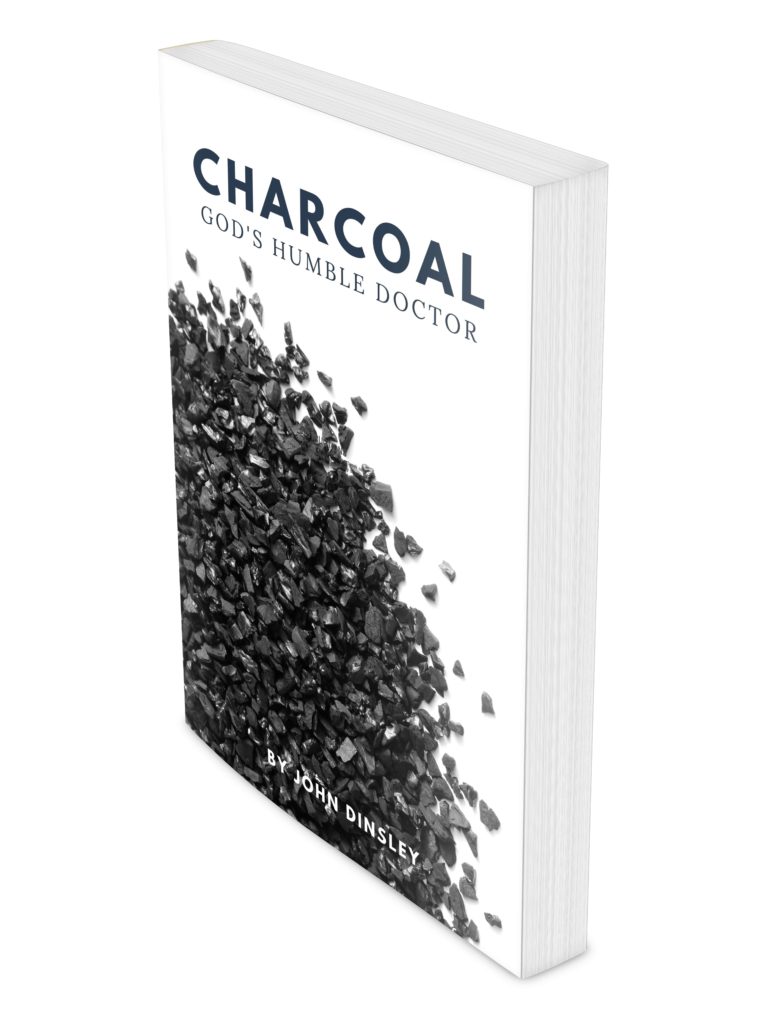These entries represent some of the discoveries we stumble upon while researching online, usually for unrelated material.

Coconut Activated Charcoal and Thermonuclear Fusion Power
I found this blog very interesting considering the connection coconut activated charcoal has to thermonuclear fission reactors currently used around the world.
Of Coconut Futures and Thermonuclear Fusion Power
By: Surfdaddy Orca
Published: October 27, 2009
“There may soon be a run on coconut futures. Vintage 2002 Indonesian coconut-shell charcoal is being used to help build what may become the first commercially viable Tokamak fusion power electrical generating facility near Cadarache in the south of France—about 38 miles from the Mediterranean.
Tokamak (from the Russian for “toroidal chamber with magnetic coils”) is a type of magnetic confinement device for producing controlled thermonuclear fusion power. The coconut charcoal is an environmental sponge that “adsorbs” the helium and hydrogen byproducts of the thermonuclear fusion reaction.
This burning plasma prototype facility called ITER (Latin – “the way”) will be at least 10 times greater than the external power delivered to heat the plasma…
The Tokamak building is the core of ITER, where fusion experiments are planned to start in 2018. The reinforced concrete structure will sit with 5 1/2 stories underground and nineteen stories above. Adjacent to the main building, an assembly hall will be the location for pre-assembly of Tokamak components.
In ITER, the fusion reaction is achieved in Tokamak using magnetic fields to contain and control hot plasma. The fuel –- a mixture of deuterium and tritium, both isotopes of hydrogen –- is heated to temperatures in excess of 150 million°C, forming helium and neutrons in addition to the hot plasma. A helium nucleus carries an electric charge that responds to the magnetic fields of the Tokamak, and remains confined within the plasma. Approximately 80% of the energy produced is carried away from the plasma by neutrons — a neutron has no electrical charge and is unaffected by magnetic fields. The neutrons are absorbed by the surrounding walls of the Tokamak, transferring their energy to the walls as heat.
This is where the coconuts come into the picture. At a fraction of a fraction of the cost of the reactor ($10 billion) the coconuts will be used to generate a cooling vacuum essential to ITER’s operation. In the central chamber, some of this vacuum separates the plasma from the surrounding solid walls and allows fusion to proceed unhindered by air molecules. The vacuum pumps suck air out of ITER and “adsorb” waste helium from the fusion reaction, along with other debris created when hot plasma smashes into the reactor wall.
“This can only be done with very large cryogenic pumps,” says Christian Day of the Karlsruhe Institute of Technology in Germany. The cryogenic pumps capture loose helium and hydrogen through a process that involves atoms of the gases sticking loosely to a solid surface — the greater the surface area, the better. “We wanted a material that behaves like a sponge, with lots of internal surfaces,” Day adds. After 20 years of searching for the ideal adsorber –- including sintered metals and porous minerals called zeolites –- Day’s team decided on charcoal. And not just any charcoal. “We found that coconut-shell charcoal is the best,” Day says. “It is somehow strange that you need this very natural material to make a fusion device.”
Considering simple coconut activated charcoal is currently used in thermonuclear fission reactors to scrub rogue radioactive isotopes that are vacuumed off of the reactors, and then to think it would also be a vital part of any future thermonuclear fusion reactor certainly aught to humble us all. Who but an all-wise Creator would come up with a plant that grows well on salty sand, needs little to no rain or soil nutrients, and yet provides food and drink, clothing, housing and heating for millions of people, never mind converts easily into charcoal that is used everywhere from outer space to the depths of the oceans, and everywhere in between, to cleanse, purify, neutralize and decontaminate sick air, sick water, sick soil, sick food, and sick people. What group of human intellects could ever dream up a plant like that let alone make one? Even if they could, no doubt the first prototype would cost far more than $10 billion.
Our Creator is not awe some He is awe full!!! And to give us a remedy for so many thousands of deadly toxic man-made poisons (including radioactive) should prove beyond a shadow of a doubt that He loves us yet.
Biodegradable New Charcoal Board Absorbing VOCs as a Building Material
2nd International Symposium on Environmentally Conscious Design and Inverse Manufacturing (EcoDesign’01)
Tokyo, Japan
December 11 – 15
ISBN: 0-7695-1266-6
Kazunori Shibano
Shuji Yoshizawa
Yuu Ogawa
“We newly developed a charcoal board by adhering charcoal powders with superfine natural fibers as binder. The superfine cellulose and collagen fibers were prepared from defiberized milk cartons and leather scraps with a grinder, respectively. The charcoal board adsorbed formaldehyde gas of 20 ppm to almost 0 ppm in two hours. And it is confirmed that the charcoal board adsorbed and desorbed moisture depending on the relative humidity of the environment. When charcoal powder was adhered with the superfine fibers, the ability of the performance of charcoal was maintained in the charcoal board. The charcoal board was changed to the charcoal powder in the soil after 6 months. When the charcoal board is thrown out, the binder is biodegraded and charcoal powder acts as soil remover. Finally the charcoal board can be expected to be applied for building materials of Healthy Housing.”
International Space Station (ISS) water recycling

When one considers that one pound of payload costs as much as $10,000 to blast into orbit, a little bit of math will tell you that $154,000,000 (the amount spent for ISS water recycling equipment) would only pay the cargo fees for 15,400lbs of water or 1,800 gallons. If the average adult male needs about 64 fl. oz. of water a day, one astronaut would have enough water to last about 3,600 days in space. At any given time there are at least 6 astronauts on board the ISS. That would average out to about 600 days worth of bottled water. To that you would add back in the payload costs for getting the recycling equipment up to the ISS, which for argument’s sake we will say would double the time to 1,200 days.
Now if the extent of NASA’s vision for the future is short missions around earth and a couple field trips to the moon then obviously they should just take Aquafina bottled water (by Coca-Cola®). But, if they are serious about flying to some far off world one day and water fountains along the way were as scarce as scientist think, would they ever make it alive if they didn’t have some way of reusing what they started out with?
Looking at the problem from the scientists’ perspective, recycling is the only solution. Until they can create gravity, or until they can get plants to function in 0 gravity, they need some solution. Like many other devices first designed for space there are direct applications for these recycling devices on planet earth.
For those who understand that man will never be able to do inter planetary travel, never mind inter stellar travel, due to 0 gravity effects on the human body, this whole to do about space travel is just another passionate dream of mankind.
Meanwhile the same strategies used in the recycling equipment on the ISS are also being used to recycle the increasingly scarce commodity of water on planet earth. And at the most fundamental level activated charcoal is one of the most versatile agents employed to give back something that at least is not toxic.
Preserve Corpses
This section is from “The Domestic Encyclopaedia Vol1“, by A. F. M. Willich © 1802. Amazon: The Domestic Encyclopaedia.
“Besides these various purposes to which charcoal is daily applied, it also promises to be of considerable service in medicine; on account of its absorbent and antiseptic properties. (See Breath, p. 335.) From a late account given by Dr. Metzler, an eminent physician in Germany, we quote the following extraordinary fact: The corpse of a person that had been murdered twelve days, was brought before a coroner’s inquest, and, contrary to the expectation of the court, there was not the least mark of putrefaction, nor any offensive smell perceptible. On opening the intestines of the abdomen, they were found in an unity dry state. The cause of this phenomenon was soon discovered; for it appeared in the course of examination, that the body had been kept for the whole time buried in dry coals coarsely pounded, at least twelve inches deep. It was still more remarkable, “that the cartilaginous parts, especially those of the breast, had acquired a degree of softness, resembling that of butter.” — We submit the application of this singular property to the discernment of our readers.”
Chinese Mummy
One visitor to our site pointed us to a book about mummies. According to her report, “a Chinese lady who died 2100 years ago was buried in a series of caskets within caskets, they were buried in five tons of charcoal (this is sort of hard to imagine, eh?), and then the whole deal was sealed with white clay. The charcoal was thought to soak up anything that seeped through the clay.”
Apparently she was as well preserved as Egyptian mummies buried in layers of sand and charcoal. Hmmm, if charcoal works so well in preserving dead mummies one wonders how well it would work for living mummies???
(Tales Mummies Tell, Scholastic Press, 1998, p. 22)
CHARCOAL USED AS A SCALP TREATMENT
Activated Charcoal can be used as a clarifying and detoxifying scalp treatment! If you have oily, irritated or dandruff-prone scalp, Activated Charcoal can help. Message a small amount of charcoal powder into scalp and leave on for at least 10 minutes (or for as long as you can). Your scalp will look black. Shampoo and condition as usual. You will be left with squeaky clean hair and AWESOME volume at the roots. Those with dark hair can use Activated Charcoal as a dry shampoo when you massage a tiny bit onto scalp and brush hair to distribute. For those with light hair colors, using this as a pre- shampoo scalp treatment, start by using only a small portion to make sure the residue doesn’t darken your hair (any residue you see is temporary, which can be removed by a more thorough cleansing process). By using the Activated Charcoal , the cleansing and volumizing effect was dramatically increased!
Homemade Water Filters
These entries are in response to a question posted asking where to buy activated charcoal.
“I posted this question at the end of the recent water filter thread, but that thread may be about played out.
Can I buy activated charcoal in bulk for water treatment? Do laboratories use this stuff? Water treatment plants? Is it expensive in bulk?
Can I use real wood charcoal (not briquettes) to filter chemicals from water?”
Puddintame March 19, 1999
Answers
“Yes you can use real wood charcoal to filter water. My folks did this when I was growing up, for we had only a cistern and caught rainwater. My dad would save charcoal from the wood stove and use it in the filter system that carried the rainwater from the roof to the cistern. I don’t remember the order, but there was a heavy screen on top of which was gravel, sand and charcoal in layers.
We have been making charcoal this winter to use in our water system. We are having two 500-gallon concrete tanks buried underground. We will run the downspout into a pipe that empties into the tanks, after it goes through the filter system.
This is how we make charcoal. We take large live coals from our wood stove and cover them with ashes in the ash bucket and set them outside. They cool slowly and you have nice charcoal. If they aren’t covered with ashes they will burn up, just making more ashes. We also burned some junk trees to make room for a workshop. When the brush piled cooled we saved the charcoal to use in the storage tanks. For the house we also have a British Berkefeld Filter, which we are using now.”
gilda Jessie March 19, 1999.
“Just this year I have saved wood stove ashes and filtered them through a 1/2inch mesh hardware cloth to separate the bibber pieces of charcoal. As an experiment, I put some charcoal in a colander and washed it at the kitchen sink. The ash washed off easily and left nice clean charcoal–pure carbon. I then ground up the charcoal with a piece of 2×4 on a piece of plywood. It was very easy to pulverize it. I then lined a wide mouth canning funnel with two coffee filters and filled it with the charcoal. I put the funnel over a quart canning jar. Through the filter I poured a couple of gallons of rather bad tasting water.
To my delight, the filtered water was incredibly good tasting. The bad flavor was completely gone. I was amazed. I intend to try this with chlorinated water to see if it removes the chlorine but I’m pretty sure already that it will. That charcoal is awesome.”
Skeeter Simpson March 19, 1999.
Pig Farms – Pit Remedies
Giant hog barns are built with 8-foot basement pits that accommodate all the waste from the thousands of hogs – including but not limited to excrement, urine, bedding, feed, piglets, etc. As the pits fill a crust builds up on top of the fluid mass, which makes an ideal environment for flies and disease. These giant pits are emptied on average 2.5 times a year and the liquid mass is pumped onto fields as a source of fertilizer. But, as you can imagine, the smell is tremendous, not just on the fields, but in the hog barns especially.
Activated charcoal powder has been used experimentally to help control the odors. But in powder form it is very difficult to mix it evenly in the pits. The farm managers were pleased with the results but they did not like the mess.
The solution that seemed to work best was to spread 150 pounds of activated charcoal powder evenly over the entire floor after the pits were emptied then the entire shed was power washed and the charcoal was evenly mixed as it drained into the pits.
The benefit of using activated charcoal on hog farms goes far beyond controlling odors in the hog barns. Where there are odors there follows a scourge of flies and other insects that carry or spread disease. Less odor, less flies, less disease, less antibiotics, more savings, more net income. And then what price does a farmer place on staying on good terms with his neighbors?
It is estimated that only 15% of hog producers use some product to reduce odor and flies (typically not charcoal powder). You would think with the good results activated charcoal would be an easy sale. But being black and dusty seems to outweigh the benefits for most. And yet activated charcoal as a remedy for hog farm odors has been shown to reduce odors up to 50% (Iowa State Univ.)
More recently, due to the use of GMO corn feed, hog farms have inherited a giant new problem. The super corn produces super bacteria (also fed by steroids in the feed) that produce super gas bubbles in the hog pits that don’t want to pop as they grow and grow until they reach the floor grating and finally burst releasing huge amounts of deadly gas. Gas that is actually killing the livestock (and what about the farm hands?!). Maybe black messy charcoal powder isn’t so bad after all!
DMSO Odor
“Unusual Patient Odor Interfering with Care”
Annals of Emergency Medicine – Volume 27, Issue 3 (March 1996) © 1996 American College of Emergency Physicians
To the Editor:
“We report the case of an unusually noxious patient odor, caused by dimethylsulfoxide (DMSO), that interfered with the treatment of and staff interaction with a patient. Our solution may prompt readers to consider similar approaches to odor control.
An 80-year-old man presented to the emergency department with high-output heart failure resulting from severe anemia caused by myelodysplastic syndrome. On ED admission and subsequent transfer to the ICU, the patient was noted to be emitting a noxious, garlic/putrid odor from his skin, breath, and urine. He admitted to be receiving “chelation” therapy with IV DMSO for his anemia from an outside clinic. He had received the last dose of DMSO approximately 5 hours before ED presentation.
The odor was strong, penetrating, and highly unpleasant. One staff member said it was evocative of rotten oysters and garlic. Health care workers were unable to stay in the patient’s room for extended periods…
Odor control was finally achieved with the use of common charcoal…”


